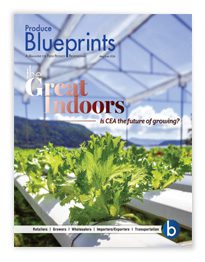“Weather continues to be a wild card,” confirms Tony Stachurski, corporate vice president for Hardie’s Fruit & Vege-table Company, LP, headquartered in Dallas. “Looking at a three-year aggregate, we’ve had drought, flooding, and freezing cold,” he notes. Luckily, Hardie’s was not affected by any of the tornados that hit Texas in 2016 during March, April, May, and July.
Stachurski also left out heat waves, which have caused issues for nearby Marengo Foods, LLC, also based in Dallas. This past October, high temperatures affected peppers, which in turn impacted size. Marengo’s chief executive officer, Juan Ibarra, was rather disappointed in the smaller peppers, but at least the crop made it to harvest.
For some growers, like Cargil Farms in Uvalde, the past year was tough. Last February there was a devastating hail storm, followed by extreme rains in the summer, then freezes in the winter. In late January 2017 came another element: high winds. “It’s been one extreme to another,” comments Steve Cargil.
Others were mostly unscathed by the temperature swings and weather events. Peter Q. Huynh, president of A-A1 Foodservice in Austin, considers the vagaries of Mother Nature as the toughest factor in trying to run a successful produce business. “Weather is the big factor,” he states, adding, “but we’ve been very fortunate.”
Quality Concerns
Temperature swings certainly impact the quality of the product, but also the length of the season. Stachurski finds the “Texas growing season is shorter, and more intense for what’s available.”
Onions, watermelon, and cabbage, which have longer seasons, are more likely to handle the inevitable ups and downs, but more sensitive crops like “blueberries and peaches are heavily affected by rain and cold snaps,” Stachurski says, wreaking havoc with supply and demand by making these “commodities either heavy or nonexistent.”
Although Leadbetter characterized last winter as “pretty mild,” it doesn’t necessarily mean smooth sailing for growers—as weather conditions continue to strike a precarious balance between damaging crops and opening the door to issues with pests and disease.
A case in point is whiteflies. Although incidence has been minor in recent years, the weather dictates the pest’s appearance: when it doesn’t get cold, whiteflies can survive dormancy and return in the spring. If temperatures do get very cold, the situation is again fraught with mixed results. “A couple good frosts eradicate the fly,” Leadbetter relates, but growers have a new headache to deal with—“we have no bugs,” he says, “but frozen watermelon.”



